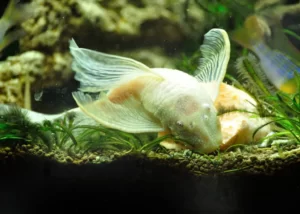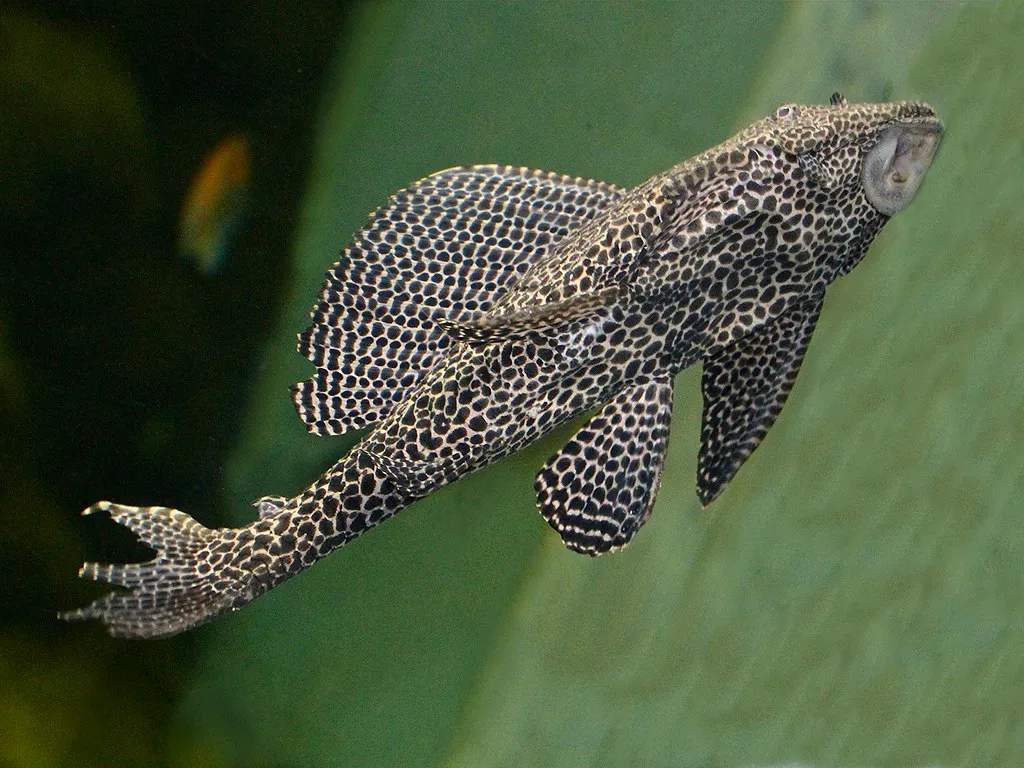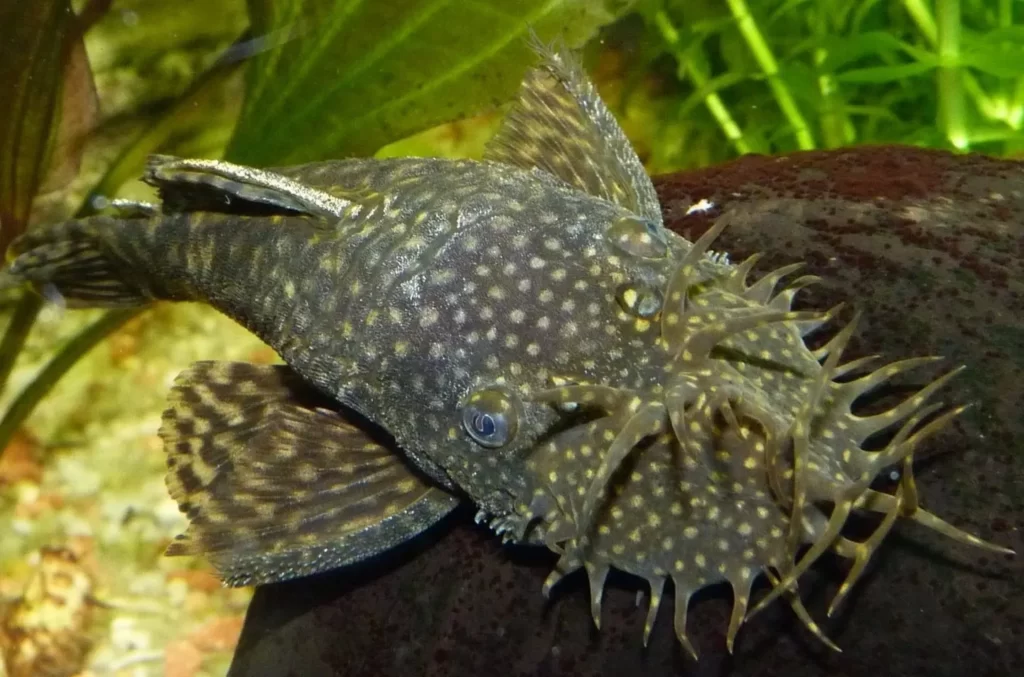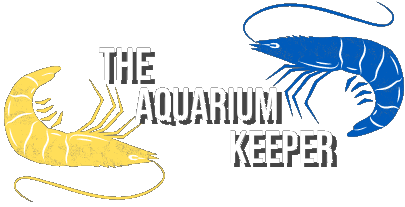
10 Biggest Pleco Species You Should Keep

Writer at The Aquarium Keeper
Plecos are a staple species in the fishkeeping hobby. They are often housed in community aquariums and are mainly considered bottom-dwellers. Often people keep smaller pleco species in their tank, but there are less popular larger pleco types, that are also evenly amazing. In this article, I will break down 10 biggest pleco species you should definitely consider keeping, if you have a larger tank.
General Guidelines For Keeping Plecos Successfully
Just before getting into the plecos I researched, I want to simply introduce some general guidelines for keeping plecos in an aquarium. You might already know some pleco requirements if you already had them, but for some readers, this might be new information. Here are some things you should know before keeping plecos:
- Plecos, known for their algae-eating habits, are generally peaceful but can be territorial, especially towards other bottom dwellers. Providing ample space for each Pleco is crucial.
- Water quality is paramount. Plecos are sensitive to poor conditions, so maintaining clean, stable water with regular checks and changes is vital for their health.
- These fish are nocturnal and need hiding places to rest during the day. Incorporating caves, driftwood, and other shelters in your aquarium will mimic their natural habitat and keep them comfortable.
- Diet variety is essential. While they love algae, Plecos also need a balanced diet including vegetables and specialized Pleco food to ensure proper nutrition.
- Be cautious when selecting tank mates. While Plecos are peaceful, their size and territorial nature mean they should be paired with compatible fish.
- Plecos love to burrow in sand, or at least dig in it. Be sure to try and choose a softer aquarium substrate like sand or soil instead of gravel, because it can scratch plecos.
Remember, each Pleco species has its unique needs and temperament. Understanding these nuances will greatly enhance your success in creating a harmonious and healthy aquarium environment for these fascinating creatures.
Biggest Plecos
To begin this list, I want to mention that I rank these pleco species from largest to least largest. Each species has its own requirements, so be sure to follow them if you are actually interested in keeping them.

Another thing is that the photos used in this article might slightly differ from the real appearance of these fish since it hugely depends on the lightning of the picture, and the environment the fish is in.
Adonis Pleco
The Adonis Pleco is a striking freshwater giant, revered for its remarkable spotted pattern that diminishes with maturity. As juveniles, they are a spectacle of white spots against a dark backdrop, while adults tend to a more uniform dark shade. A behemoth in the aquarium, they command attention with their size and presence.

This species is not just about looks, it’s an industrious scavenger. The Adonis Pleco brings a functional aesthetic to any large aquarium, serving as a living cleanup crew while exuding a prehistoric charm. They are indeed the gentle giants of the aquatic world, requiring ample space to roam.
| Aspect | Information |
|---|---|
| Scientific Name | Acanthicus adonis |
| Origin | South America |
| Rarity | Rare |
| Price | $100 - $300 USD |
| Care Level | Advanced |
| Water Temperature | 24°C - 30°C (75°F - 86°F) |
| pH | 6.0 - 7.5 |
| Minimum Tank Size | 120 gallons |
| Diet | Omnivore - Prefers live and frozen foods, supplemented with vegetables |
| Temperament | Semi-aggressive, especially with smaller tank mates |
| Lifespan | 10 - 15 years |
| Size | Up to 40 inches (100 cm) in the wild, typically smaller in captivity |
Adonis Plecos require a significant commitment in terms of space and tank management, but for the dedicated aquarist, they offer an unparalleled aquatic experience, bringing a slice of South American river life into the home.
Cactus Pleco
Cactus Plecos are among the most sought-after in the hobby for their distinctive spiny appearance and orange coloration. They bring a touch of the Amazon’s complexity to any large aquarium setup with their unique looks and behavior.

Enigmatic and somewhat elusive, the Cactus Pleco is an amazing fish that stands out when it comes to appearance. They are also known for their territorial nature and thus require an environment that can accommodate their need for space and individual territories.
| Aspect | Information |
|---|---|
| Scientific Name | Pseudacanthicus sp. |
| Origin | Amazon and Orinoco basins, South America |
| Rarity | Uncommon |
| Price | $50 - $300 USD, depending on size |
| Care Level | Moderate to Advanced |
| Water Temperature | 26°C - 30°C (79°F - 86°F) |
| pH | 6.0 - 7.4 |
| Minimum Tank Size | 100 gallons |
| Diet | Carnivore - Prefers meaty foods like shrimp and fish, supplemented with pellets |
| Temperament | Aggressive, particularly towards other bottom dwellers |
| Lifespan | 10 - 15 years |
| Size | Up to 35.4 inches (90 cm) in the wild, smaller in captivity |
The Cactus Pleco’s armored exterior and solitary nature make it a formidable yet fascinating addition to sizable home aquariums, offering a glimpse into the diverse aquatic life of South American rivers.
Titanic Pleco
The Titanic Pleco is a true survivor, named aptly for its robust size. Inhabiting the fast-moving waters of the Amazon, this sucker fish is a remarkable spectacle in any large aquarium, with its distinct morphology and ability to grow to monumental sizes.

Known for its wood-eating habits, the Titanic Pleco is not just about brawn, it plays a crucial role in the ecosystem by processing submerged tree trunks and branches, making it an integral part of a well-rounded aquatic community.
| Aspect | Information |
|---|---|
| Scientific Name | Panaque schaeferi |
| Origin | Upper Amazon Basin, South America |
| Rarity | Rare |
| Price | $200 - $400 USD |
| Care Level | Advanced |
| Water Temperature | 24°C - 29°C (75°F - 84°F) |
| pH | 6.5 - 7.5 |
| Minimum Tank Size | 150 gallons |
| Diet | Herbivore - Specializes in wood, also consumes fruits and vegetables |
| Temperament | Peaceful but territorial |
| Lifespan | 10 - 15 years |
| Size | Over 29.5 inches (>75 cm) in the wild |
With their ecological significance and impressive size, Titanic Plecos are a magnificent centerpiece, evoking the grandeur of their namesake and the mystery of the deep Amazonian waters.
Orinoco Sailfin Catfish
The Orinoco Sailfin Catfish is an impressive specimen with a dorsal fin that rivals the sail of a ship, hence its name. It’s a robust pleco that can adapt to a variety of tank conditions, making it a favored choice for spacious home aquariums.

While they are peaceful in nature, the size of the Orinoco Sailfin means they need plenty of room to navigate and explore. Their majestic fins and armored bodies make them a living piece of art in any large aquarium setup.
| Aspect | Information |
|---|---|
| Scientific Name | Pterygoplichthys multiradiatus |
| Origin | Orinoco River Basin, South America |
| Rarity | Common |
| Price | $20 - $50 USD |
| Care Level | Moderate |
| Water Temperature | 22°C - 28°C (72°F - 82°F) |
| pH | 6.5 - 7.5 |
| Minimum Tank Size | 100 gallons |
| Diet | Omnivore - Algae, vegetables, and high-quality sinking pellets |
| Temperament | Peaceful but can be territorial due to size |
| Lifespan | 10 - 15 years |
| Size | Up to 28 inches (71.1 cm) |
Their peaceful demeanor and adaptability to tank life make the Orinoco Sailfin Catfish a popular choice for those ready to meet the demands of such a grand aquatic creature.
Common Pleco
A staple in the aquarium trade, the Common Pleco is a familiar sight for many enthusiasts. Its adaptability and impressive size make it a notable presence in any large tank.

Despite their reputation as algae eaters, Common Plecos require more than just the algae in a tank to thrive. They are not as efficient in algae control as some of their smaller relatives but still play a role in tank maintenance. Lots of people get common plecos when they are juveniles, and often get rid of them when they find out about their true requirements in terms of space.
| Aspect | Information |
|---|---|
| Scientific Name | Hypostomus plecostomus |
| Origin | South America |
| Rarity | Common |
| Price | $5 - $20 USD |
| Care Level | Easy |
| Water Temperature | 20°C - 26°C (68°F - 79°F) |
| pH | 6.5 - 7.5 |
| Minimum Tank Size | 75 gallons |
| Diet | Herbivore - Algae, blanched vegetables, algae wafers, leftover food |
| Temperament | Peaceful |
| Lifespan | 10 - 15 years |
| Size | 12 - 24 inches (30 - 61 cm) |
Common Plecos are a great choice for aquarists ready to provide the space needed for these aquatic cleaners to flourish, although when it comes to appearance, they are pretty basic compared to other majestic plecos on this list.
Megalancistrus Parananus
Megalancistrus parananus, often overlooked due to its more flamboyant relatives, is a robust and sizeable Pleco that can be a unique addition to larger aquarium setups.

With its substantial size and armored body, the Megalancistrus parananus adds a touch of intrigue to the tank. It’s less about showy colors and more about the imposing silhouette it casts as it patrols the bottom of its aquatic domain. Since these species are not that popular and are less talked about than their relatives, the megalancistrus parananus doesn’t even have an easier name!
| Aspect | Information |
|---|---|
| Scientific Name | Megalancistrus parananus |
| Origin | South America |
| Rarity | Uncommon |
| Price | $40 - $80 USD |
| Care Level | Moderate |
| Water Temperature | 24°C - 28°C (75°F - 82°F) |
| pH | 6.5 - 7.4 |
| Minimum Tank Size | 80 gallons |
| Diet | Omnivore - Prefers a varied diet with both plant and animal matter |
| Temperament | Semi-aggressive, especially towards smaller tank mates |
| Lifespan | 8 - 12 years |
| Size | Up to 23.1 inches (58.8 cm) |
Despite their less common occurrence in the hobby, those who keep Megalancistrus parananus find them to be rewarding for their fascinating behavior and contribution to the tank’s ecosystem.
Amazon Sailfin Catfish
The Amazon Sailfin Catfish, with its leopard-like spots and expansive dorsal fin, is a statement piece in any large aquarium. This species is renowned not only for its size but also for its contribution to the tank’s cleanliness.

Despite being less renowned than its Sailfin cousin, Pterygoplichthys pardalis is a remarkable species that combines both form and function, working tirelessly to scour surfaces clean of algae.
| Aspect | Information |
|---|---|
| Scientific Name | Pterygoplichthys pardalis |
| Origin | Amazon Basin, South America |
| Rarity | Common |
| Price | $10 - $40 USD |
| Care Level | Moderate |
| Water Temperature | 22°C - 30°C (72°F - 86°F) |
| pH | 6.0 - 7.5 |
| Minimum Tank Size | 100 gallons |
| Diet | Omnivore - Requires a varied diet including algae, vegetables, and protein-based foods |
| Temperament | Peaceful but can be territorial |
| Lifespan | 10 - 15 years |
| Size | Up to 22.7 inches (57.8 cm) |
Aquarists value the Amazon Sailfin Catfish for their majestic appearance and their ability to keep algae in check, making them a practical and visually appealing choice for the larger freshwater aquarium.
Sailfin Pleco
The Sailfin Pleco is an aquarium favorite, known for its remarkable dorsal fin and its peaceful demeanor. It’s a sizable species that can become the centerpiece of a large home aquarium.

Pterygoplichthys gibbiceps is not just visually striking, it’s also a hardworking member of the tank, helping to keep surfaces free from algae. They bring both beauty and utility to their freshwater habitat. The Sailfin Pleco slightly differs from a very similar Amazon Sailfin Pleco, mainly when it comes to appearance and the color patterns on the body.
| Aspect | Information |
|---|---|
| Scientific Name | Pterygoplichthys gibbiceps |
| Origin | South America |
| Rarity | Common |
| Price | $15 - $50 USD |
| Care Level | Moderate |
| Water Temperature | 22°C - 28°C (72°F - 82°F) |
| pH | 6.5 - 7.5 |
| Minimum Tank Size | 125 gallons |
| Diet | Omnivore - Enjoys a varied diet of algae, vegetables, and occasional protein |
| Temperament | Peaceful but may become territorial with age |
| Lifespan | 10 - 15 years |
| Size | Up to 20 inches (50 cm) |
It’s graceful appearance and algae-eating habits make it a dual-purpose species that’s both practical for tank maintenance and captivating to watch.
Royal Pleco
The Royal Pleco, with its regal name, lives up to expectations, boasting bold white or yellow lines against a dark body. This stunning fish is a natural work of art, adding a touch of majesty to any large aquarium.

While it’s not the largest in the Pleco family, the Royal Pleco still requires ample space due to its territorial nature. They are known for their wood-eating behavior, contributing to the breakdown of organic material in their habitats.
| Aspect | Information |
|---|---|
| Scientific Name | Panaque nigrolineatus |
| Origin | South America |
| Rarity | Uncommon |
| Price | $25 - $100 USD |
| Care Level | Moderate |
| Water Temperature | 24°C - 30°C (75°F - 86°F) |
| pH | 6.5 - 7.5 |
| Minimum Tank Size | 120 gallons |
| Diet | Omnivore - Primarily wood, supplemented with vegetables and occasional protein |
| Temperament | Peaceful but territorial |
| Lifespan | 10 - 15 years |
| Size | Up to 16 inches (40 cm) |
The Royal Pleco’s distinctive appearance and the role it plays in the ecosystem make it a prized species for the dedicated hobbyist.
Bristlenose Pleco
The Bristlenose Pleco, with its distinct bristles adorning the males, is a small yet mighty member of the Pleco family. Their diligent algae-cleaning makes them a welcome addition to many freshwater aquariums.

Esteemed for their algae-eating capabilities, Bristlenose Plecos are more than just functional, their quirky appearance and gentle nature endear them to hobbyists. One feature that makes them stand out is their “mustache” at the front of the face.
| Aspect | Information |
|---|---|
| Scientific Name | Ancistrus spp. |
| Origin | South America |
| Rarity | Common |
| Price | $2 - $5 USD |
| Care Level | Easy |
| Water Temperature | 21°C - 26°C (70°F - 79°F) |
| pH | 6.5 - 7.5 |
| Minimum Tank Size | 20 gallons |
| Diet | Herbivore - Algae, blanched vegetables, algae wafers, leftover food |
| Temperament | Peaceful |
| Lifespan | 5 - 7 years |
| Size | 4 - 6 inches (10 - 15 cm) |
With their peaceful nature and minimal care requirements, Bristlenose Plecos are an excellent choice for both novice and experienced aquarists alike.
Frequently Asked Questions
How Much do Plecos Cost?
The cost of a pleco depends on its size, appearance, and species. Some rare plecos can cost hundreds of dollars, while the most basic species like bristlenose or common plecos can be as cheap as $5.
What is The Largest Pleco Species?
The Adonis Pleco is probably considered one of the largest species of plecos. It can reach up to 40 inches in length and is truly a monster. Not many people can keep this fish because it requires that much space.
Writer's Thoughts
Personally, I love plecos, especially the big ones. They are truly the giants of the fishkeeping world and should be taken care of properly if you decide to get one. Hopefully, this list of giant plecos helped you make up your mind on which pleco you want to keep.

Thank you for reading my blog post. This website was created with the sole intention of providing quality information regarding fishkeeping. I have been in the fishkeeping hobby for 8 years, and through many trials and errors as well as online research I gathered a lot of information, which I want to give back to the community.





